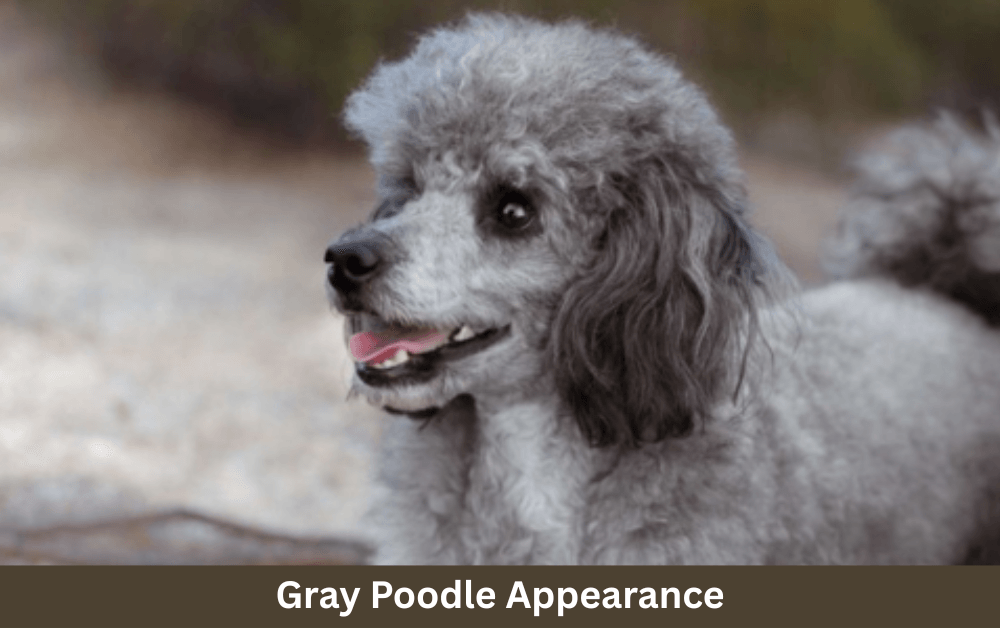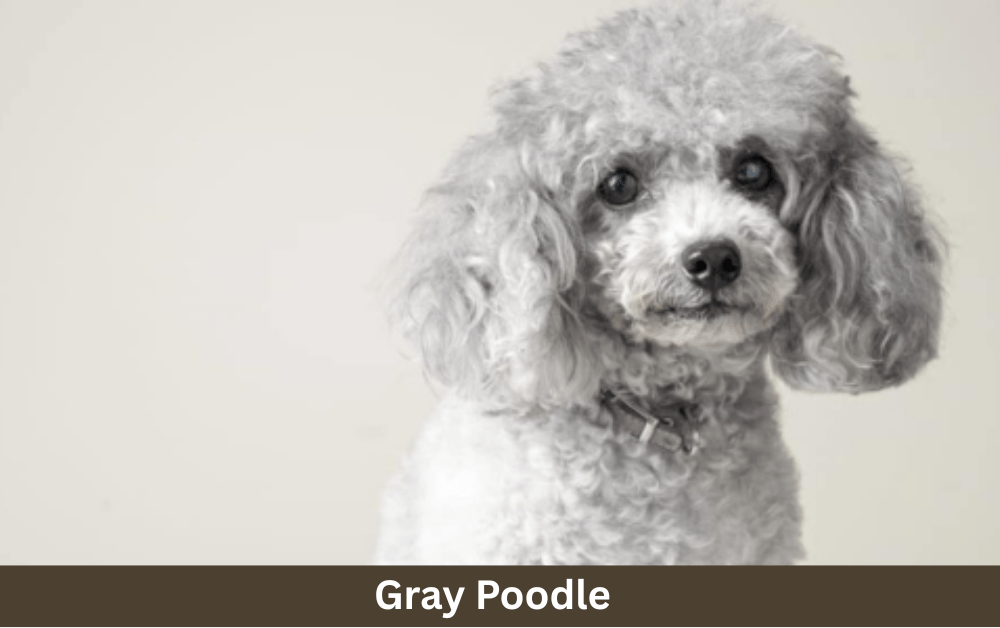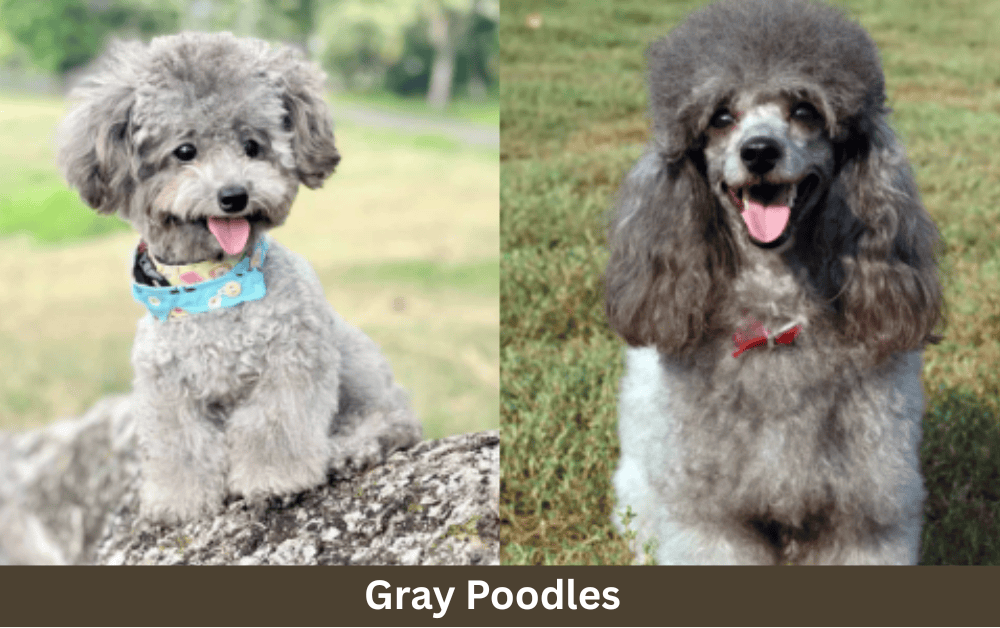Introduction
This guide has everything you need to know if you’re considering adopting one or just want to learn more about this unique breed. We cover everything from their history and genetics to grooming needs and temperament. Gray Poodles are more than just pets; they are loyal friends who bring joy and energy to any home. Their hypoallergenic coat and friendly nature make them a top choice for dog enthusiasts. “A poodle doesn’t just fill your home; it fills your heart with joy and laughter.”
Gray Poodle Quick Facts Table
| Category | Details |
|---|---|
| Origin | Germany, later popularized in France |
| Coat Color | Gray (ranges from light silver to deep charcoal) |
| Coat Type | Curly or corded, hypoallergenic |
| Size | Standard: 45-70 lbs; Miniature: 15-17 lbs; Toy: 6-9 lbs |
| Height | Standard: 15-24 inches; Miniature: 10-15 inches; Toy: <10 inches |
| Lifespan | 12-15 years (up to 18 years with proper care) |
| Temperament | Intelligent, friendly, playful, loyal, and social |
| Trainability | Highly trainable, excels in obedience and agility training |
| Exercise Needs | 30-60 minutes of daily exercise (walks, playtime, mental stimulation) |
| Grooming Needs | Brush 2-3 times weekly; professional grooming every 4-6 weeks |
| Health Concerns | Hip dysplasia, progressive retinal atrophy (PRA), Addison’s disease, ear infections |
| Diet | High-quality protein-rich dog food; avoid overfeeding |
| Price | $1,500−$3,000 (puppy); $200−$500 (adoption) |
| Good with Kids | Yes, excellent with children |
| Good with Other Pets | Yes, especially if socialized early |
| Apartment-Friendly | Yes, particularly Miniature and Toy Poodles |
History
The Poodle breed started in Germany, where people used them as water retrievers. The name “Poodle” comes from the German word “Pudel,” which means “to splash in water.” Over time, Poodles became popular in France, where they became the national dog. The Gray Poodle is a rare and beautiful variation that comes through selective breeding. Historically, nobility and royalty loved Poodles for their intelligence and elegance. People often saw them in circuses and shows because they were easy to train and moved gracefully. Today, people worldwide adore them for their versatility and charm. Their history as working dogs has shaped their active and intelligent nature, making them great companions for various activities.
Gray Poodle Genetics
The Gray Poodle’s unique coat color comes from a specific genetic combination. A dilution gene causes the gray color by affecting the black pigmentation in their fur. This gene makes the black coat fade into shades of gray over time. Gray Poodles are born black and gradually lighten as they grow, reaching their full gray shade by the age of 2-3 years. This gene makes the black coat fade into shades of gray over time, which is different from the distinct coat of Silver Poodles. Breeders carefully select parent dogs with the right genetic traits to produce Gray Poodles, ensuring the desired coat color and overall health. Their genetics also contributes to their hypoallergenic qualities, making them a good choice for people with allergies. Understanding their genetics helps breeders maintain the breed’s standards and health.
Gray Poodle Physical Characteristics

Their hypoallergenic coat makes them a great choice for people with allergies. Their fur is soft and dense, requiring regular grooming to keep it looking good. Their elegant posture and graceful movements make them stand out in any setting.
Gray Poodle Life Span
Gray Poodles live relatively long lives compared to other dog breeds. On average, they live between 12 and 15 years, with some reaching up to 18 years with proper care. Factors like genetics, diet, exercise, and regular vet check-ups play a big role in their longevity. Toy and Miniature poodles often live slightly longer than Standard Poodles. Providing a healthy lifestyle, including a balanced diet and regular exercise, can help extend their life span. Regular health screenings can also catch potential issues early, ensuring a longer and healthier life for your Gray Poodle.
Gray Poodle Temperament
Their intelligence makes them great at problem-solving, and they enjoy activities that challenge their minds. Gray Poodles are also loyal and affectionate toward their owners, making them wonderful companions.
Real-time experience: “My Gray Poodle, Max, loves solving puzzles. He once figured out how to open a treat drawer by watching me do it just once!”
Gray Poodle Health Issues

Gray Poodles, like all dog breeds, can face certain health issues. Common conditions include hip dysplasia, a genetic condition affecting the hip joints, and progressive retinal atrophy (PRA), which can lead to blindness. Addison’s disease, a hormonal disorder, also affects some Poodles. Regular vet check-ups are essential to catch and manage these conditions early. Ear infections are another concern because their floppy ears can trap moisture and debris.
Dental issues, like gum disease, are also common and require regular brushing and professional cleanings. Obesity can be a problem if their diet and exercise are not managed properly.
Preventive Measures:
- Schedule annual vet visits for routine check-ups.
- Keep their ears clean and dry to prevent infections.
- Brush their teeth regularly to maintain oral health.
- Monitor their weight and adjust their diet and exercise as needed.
Gray Poodle Nutrition and Food
A balanced diet is key to keeping your Gray Poodle healthy and energetic. High-quality dog food rich in protein, vitamins, and minerals is ideal for their well-being. Protein sources like chicken, beef, or fish should be the main ingredient in their food. Avoid overfeeding, as Poodles can gain weight easily, leading to obesity and related health issues. Consult your vet to determine the right portion size and diet plan based on your dog’s age, size, and activity level. Always provide fresh water to keep them hydrated. You can also give them fruits and vegetables like carrots, apples, and green beans as occasional treats for extra nutrients.
Food Tips:
- Avoid foods toxic to dogs, such as chocolate, grapes, and onions.
- Choose dog food with no artificial additives or fillers.
- Consider grain-free options if your Poodle has allergies.
- Split their meals into two smaller portions to aid digestion.
Gray Poodle Grooming Requirements

Gray Poodles need regular grooming to keep their coat healthy and looking good. Their curly or corded fur can mat and tangle easily, so brush it 2-3 times a week. Professional grooming every 4-6 weeks is recommended to keep their coat trimmed and neat. Poodle ear cleaning to prevent infections, as their floppy ears can trap moisture. Trim their nails every 3-4 weeks to avoid overgrowth and discomfort. Brush their teeth 2-3 times a week to prevent gum disease and bad breath. Poodle bathing should be provided every 3-4 weeks using a mild poodle shampoo to keep their coat clean and shiny.
Grooming Tips:
- Use a slicker brush or comb designed for curly coats.
- Check their ears weekly for signs of redness or odor.
- Trim their nails carefully to avoid cutting the quick.
- Use dog-specific toothpaste for dental care.
Gray Poodle Training and Exercise
Gray Poodles are highly trainable and love mental stimulation, making them a joy to train. Start training early to teach basic commands like sit, stay, and come. Positive reinforcement methods, such as treats and praise, work best for this intelligent breed. They also need daily exercise to stay physically and mentally fit. Activities like walking, playing fetch, or agility training are great options. Poodles excel in obedience trials and enjoy learning new tricks.
Their intelligence means they can get bored easily, so mix up their training routines. Socialization is also important to help them become well-rounded and confident dogs.
Exercise Tips:
- Provide at least 30-60 minutes of exercise daily.
- Use puzzle toys to keep them mentally stimulated.
- Enroll them in obedience or agility classes for structured training.
- Supervise playtime to ensure their safety.
How Much do Gray Poodles Cost?
The price of a Gray Poodle depends on factors like size, lineage, and breeder reputation. On average, a Gray Poodle puppy costs between 1,500and1,500and3,000. Adoption from a rescue organization is a more affordable option, with fees typically ranging from 200to200to500. The initial cost includes vaccinations, microchipping, and other basic care. You should also consider additional expenses like grooming, food, and vet care. Investing in a healthy and well-bred puppy ensures a better quality of life for your pet. Always research and choose a reputable breeder or adoption center to avoid supporting unethical practices.
Gray Poodle Breeding Practices
Responsible breeders prioritize the health and well-being of their dogs. They conduct genetic testing to avoid passing on hereditary conditions and ensure proper socialization for puppies. Avoid puppy mills or unethical breeders who prioritize profit over the dogs’ welfare. Always ask for health clearances and visit the breeder’s facility before making a decision. AKC has breeding standards that every breeder must follow to attain a healthy puppy.
Ethical breeders provide a clean and safe environment for their dogs and are transparent about their breeding practices. They also offer support and guidance to new owners, ensuring a smooth transition for the puppy. Choosing a responsible breeder is crucial for the health and happiness of your Gray Poodle.
Conclusion
The Gray Poodle is a remarkable breed that combines beauty, intelligence, and loyalty. Whether you love their stunning gray coat or their playful personality, they make wonderful companions for the right owner. By understanding their needs and providing proper care, you can enjoy a fulfilling and lasting bond with your Gray Poodle. Their adaptability makes them suitable for various living situations, from apartments to large homes. With the right training, diet, and grooming, your Gray Poodle will thrive and bring endless joy to your life.
Extra Tips for Potential Owners:
- Invest in interactive toys to keep your Poodle mentally stimulated.
- Consider pet insurance to cover potential health issues.
- Join a local Poodle club or online community for support and advice.
FAQS About Gray Poodles
Are Gray Poodles good with children?
Yes, Gray Poodles are excellent with children! They are friendly, playful, and patient, making them great family pets. However, it’s important to teach children how to interact with dogs respectfully and supervise their playtime to ensure safety for both the child and the dog.
Do Gray Poodles shed a lot?
No, Gray Poodles are low-shedding dogs. Their curly, hypoallergenic coat traps loose hair, which makes them a great choice for people with allergies. However, their coat requires regular grooming to prevent matting and tangling.
Can Gray Poodles live in apartments?
Yes, Gray Poodles can adapt well to apartment living, especially Miniature and Toy Poodles. They are active dogs but don’t need a large yard as long as they get daily exercise and mental stimulation through walks, playtime, or indoor activities.
How often do Gray Poodles need to be groomed?
Gray Poodles need regular grooming to maintain their coat. Brush their fur 2-3 times a week to prevent tangles and schedule professional grooming every 4-6 weeks for trimming and maintenance. Regular ear cleaning, nail trimming, and dental care are also essential.
Are Gray Poodles easy to train?
Yes, Gray Poodles are highly intelligent and eager to please, making them one of the easiest breeds to train. They respond well to positive reinforcement methods like treats, praise, and play. Early socialization and consistent training are key to raising a well-behaved Poodle.
Do Gray Poodles get along with other pets?
Gray Poodles generally get along well with other pets, including dogs and cats, especially if they are socialized early. Their friendly and social nature helps them adapt to multi-pet households. However, always supervise initial interactions to ensure a smooth introduction.
What makes Gray Poodles different from other Poodle colors?
Gray Poodles are unique because of their rare coat color, which results from a dilution gene that lightens their black fur over time. While their temperament and care needs are similar to other Poodles, their striking gray coat makes them stand out and often more sought after.

